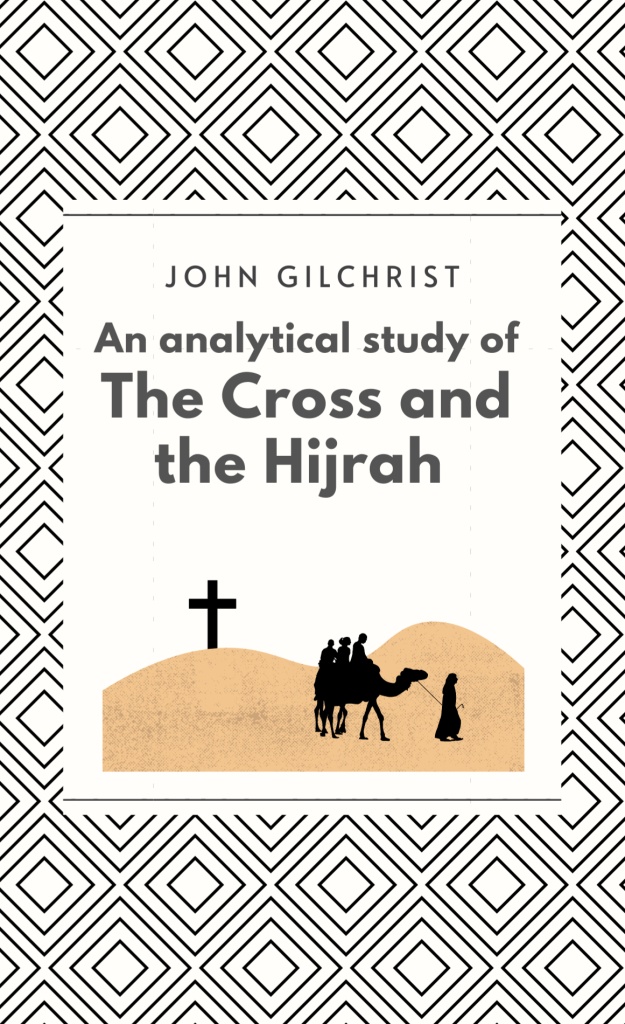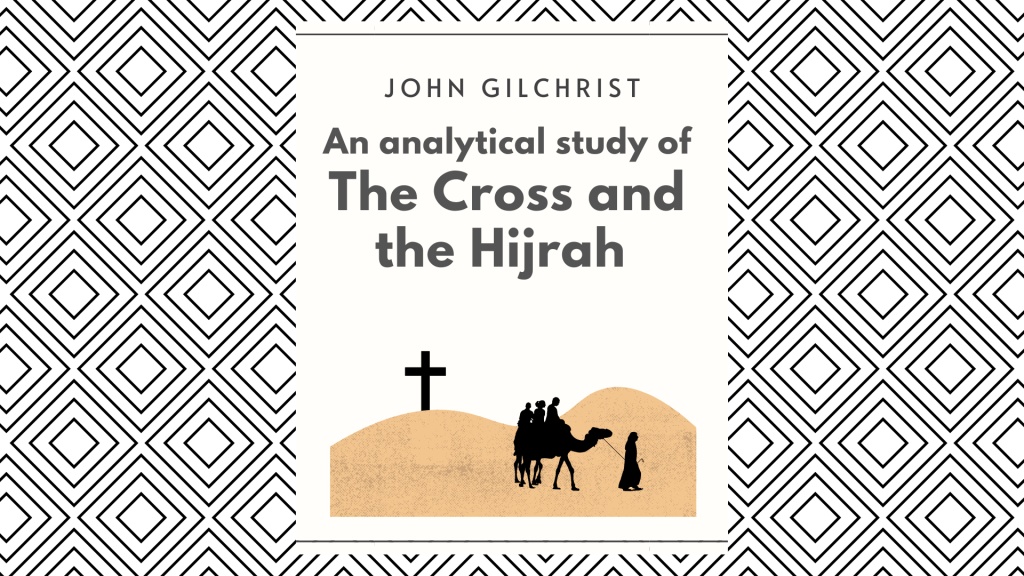The Similarities between Jerusalem and Mecca
An Analytical Study of the Cross and the Hijrah


Chapters
- Introduction
- The Similarities between Jerusalem and Mecca
- The Opposition to Jesus and Muhammad
- The Ways of Escape Before both Men
- Muhammad and the Ummah at Medina
- The Contrasting Path Chosen by Jesus Christ
- The Cross - the Choice of the Saviour of the World
- The End Result: the Glorious Kingdom of God
During the lifetime of Jesus the city of Jerusalem was the centre of Judaism, the religion of the people of Israel, the Jews, to whom Jesus himself belonged. He had been born of David's line (Luke 1:32) and was thus descended from Judah (Hebrews 7:14), one of the twelve sons of the prophet Jacob.
Nearly six centuries later Muhammad was born in the city of Mecca, the leading city of the Arab tribes throughout the Arabian Peninsula and the custodian of its most important shrine and relics. The Quraysh tribe controlled the city and its religious ceremonies and Muhammad was duly born into this tribe in 570 AD. Both Jesus and Muhammad, therefore, were members of the very nations that ruled their major cities respectively and were brought up in the environment of their forefathers and their religious customs. Just as Jerusalem was the centre of Judaism at the time of Jesus, so Mecca was the focal-point of Arab paganism during the lifetime of Muhammad.
Each city, furthermore, had its own special place of worship, a shrine that was the focal-point of all the religious ceremonies practised by the Jews and Arabs respectively. In Jerusalem the great Temple of the Jews stood at the time of Jesus. It had originally been built by Solomon nearly a thousand years earlier, had been rebuilt during the reign of Zerubbabel after the exile to Babylon a few centuries later, and by the time Jesus began his ministry it had gone through a radical phase of reconstruction that had already taken forty-six years (John 2:20) and became known as "Herod's Temple" when it was finally completed.
This temple had a number of courtyards and porticoes but its chief building was a cube-like structure in the middle of the Jewish courtyard known as the "Holy Place" which contained the Holy of Holies, an inner sanctuary where the presence of God was known to be and into which only the High Priest could go on the Day of Atonement to offer a sacrifice for the sins of the people of Israel.
Wherever the Jews were in the known world of the time, whether in Africa, Asia Minor, Greece or Rome, they would turn towards the Temple in Jerusalem to pray, signifying their rejection of the pagan rites and customs of the Gentile nations and their identification with the God of Israel, the one true God. This practice had been enjoined by Solomon (Suleiman) himself when he completed the first temple in Jerusalem. He prayed to God at the dedication of the temple in these words:
"And hearken thou to the supplication of thy servant and of thy people Israel, when they pray toward this place; yea, hear thou in heaven thy dwelling- place; and when thou hearest, forgive". -- 1 Kings 8:30
In Mecca the pagan Arabs had a similar shrine which today likewise has porticoes and an inner courtyard. Like the Holy Place in Jerusalem it too contained a cube-like structure known as the "Ka'aba" (the word in Arabic in fact signifies a cube) and to this day it is known in Islam as the holiest shrine in all the world. As the Temple in Jerusalem has been called bait ul-muqaddas in Islam (the "Holy House"), so the Ka'aba has been called baitullah (the "House of Allah"). Although Muhammad never believed that Allah himself manifested his presence in the shrine, it has nonetheless become the point of identification with Allah on earth for all Muslims and, like the Jews of old, they too all turn towards their holy house when offering their prayers to God. Every mosque in the world faces Mecca so that all Muslims will be facing the Ka'aba when they pray.
The similarity between the shrines goes still further. Not only did the Jews face Jerusalem when praying but they also came to the city from all over the known world for the various Jewish festivals held every year. Many made the journey to the city for the Passover Feast, the Festival of Booths, and other festivals. On the Day of Pentecost that followed the ascension of Jesus to heaven we read that the Jews were astounded to hear the disciples of Jesus preaching fluently in their own languages and in their exclamation of amazement we obtain some idea of the distant lands from which they had come. Thousands were gathered together and as this multitude of worshippers stood bewildered at the manner in which the apostles addressed them they said:
"Are not all these who are speaking Galileans? And how is it that we hear, each of us in his own native language? Parthians and Medes and Elamites and residents of Mesopotamia, Judea and Cappadocia, Pontus and Asia, Phrygia and Pamphylia, Egypt and the parts of Libya belonging to Cyrene and visitors from Rome, both Jews and proselytes, Cretans and Arabians, we hear them telling in our own tongues the mighty works of God". -- Acts 2:7-11.
In a similar way Arabs came from all over Arabia in the holy months to worship at the Ka'aba during the time of Muhammad. The Festival of Ukadh was their major fair but many others were held every year to which Arabs from the Najran province, the Hijaz mountain areas north of Mecca, the state of Yemen to the south, and various other cities and provinces flocked.
Both the Temple and the Ka'aba were thus the focal-points of Judaism and Arab paganism respectively to which the Jews and Arabs turned in prayer and flocked in pilgrimage to perform their devotions. Into these two similar environments Jesus and Muhammad were born, and within the precincts of their holy cities Jerusalem and Mecca they preached in the name of God to their country-men, both making special use of the annual festivals to deliver their messages to the representatives of their nations gathered together.